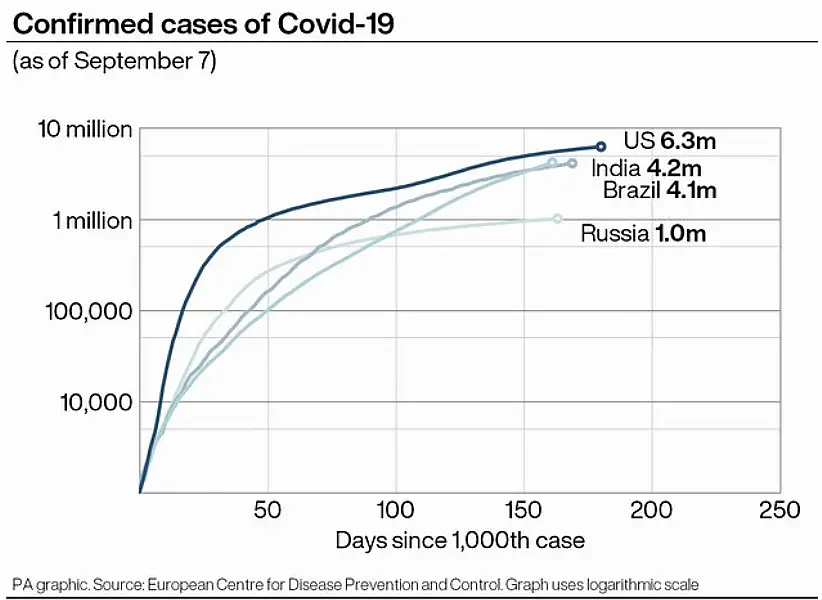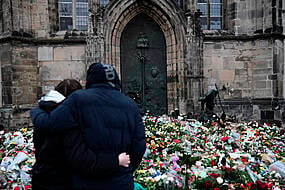New modelling research, published in The Lancet Global Health journal, suggests the equivalent of around £6.60 per person (8.60 US dollars) may be spent, assuming each country’s reproductive number remains unchanged.
But the cost of the response in the health sector is likely to escalate if transmission increases – rising to as much as £48 billion (62 billion US dollars) over four weeks under a scenario where current restrictions are relaxed and transmission increases by 50%.
This compares to the 4.5 billion US dollars each year that the Commission on a Global Health Risk Framework for the Future recommended the world spent on pandemic preparedness in 2016.

Study co-author Dr Lucy Boulanger, from the World Health Organisation, said: “Given the lack of pandemic preparedness in low and middle-income countries, and the limited resilience of their health systems, major investment will be needed to counter the Covid-19 outbreak – reflecting the constrained health capacity in countries which are facing a virus that has spread and established itself.
“The arguments for investing in preparedness are strong, juxtaposed against this massive price tag for the response to Covid-19, and coupled with the expected shock on the global economy.”
In the study, researchers modelled the future healthcare costs of the full response plan to counter the outbreak in 73 low and middle-income countries (LMICs) – accounting for 93% of the total population in LMICs – under three scenarios.
These were the status quo in which current measures to restrict movement and ensure physical and social distancing continue so transmission levels are maintained.
Another scenario looked at where restrictions are relaxed and transmission is increased by 50%.
Additionally they looked at when public health and social measures are intensified and transmission is decreased by 50%.

The number of coronavirus cases were calculated from June 26 for each of the three scenarios over four weeks, and 12 weeks.
The researchers then modelled the cost of healthcare staff, equipment and infrastructure that would be accrued by implementing the actions in the strategic response plan.
They found the main cost drivers were clinical case management, maintaining essential services, rapid response and case investigation, and infection prevention and control.
Tessa Tan-Torres Edejer, who led the research, said: “Our results emphasise that critical components of health systems need to exist when an outbreak occurs – including healthcare staff, laboratories, and mechanisms for co-ordination – as these are essential to deliver an effective response.
“More work needs to be done at the country level to identify gaps in both preparedness and response for this and future pandemics.”
The researchers note a number of limitations in their study, including that the analysis did not include isolation, quarantine, or waste management costs, and the use of international market prices without freight, insurance, and import tariffs might also underestimate costs.







